Marketing
How to Select a B2B Marketing Automation Vendor: Tools & Techniques
Ekta Swarnkar
10/24/2023
0 min read
Choosing the right marketing automation vendor is like winning half the battle. Not only do you have to find a tool that easily integrates with your existing systems and scales well, but you also have to get approval from multiple decision-makers.
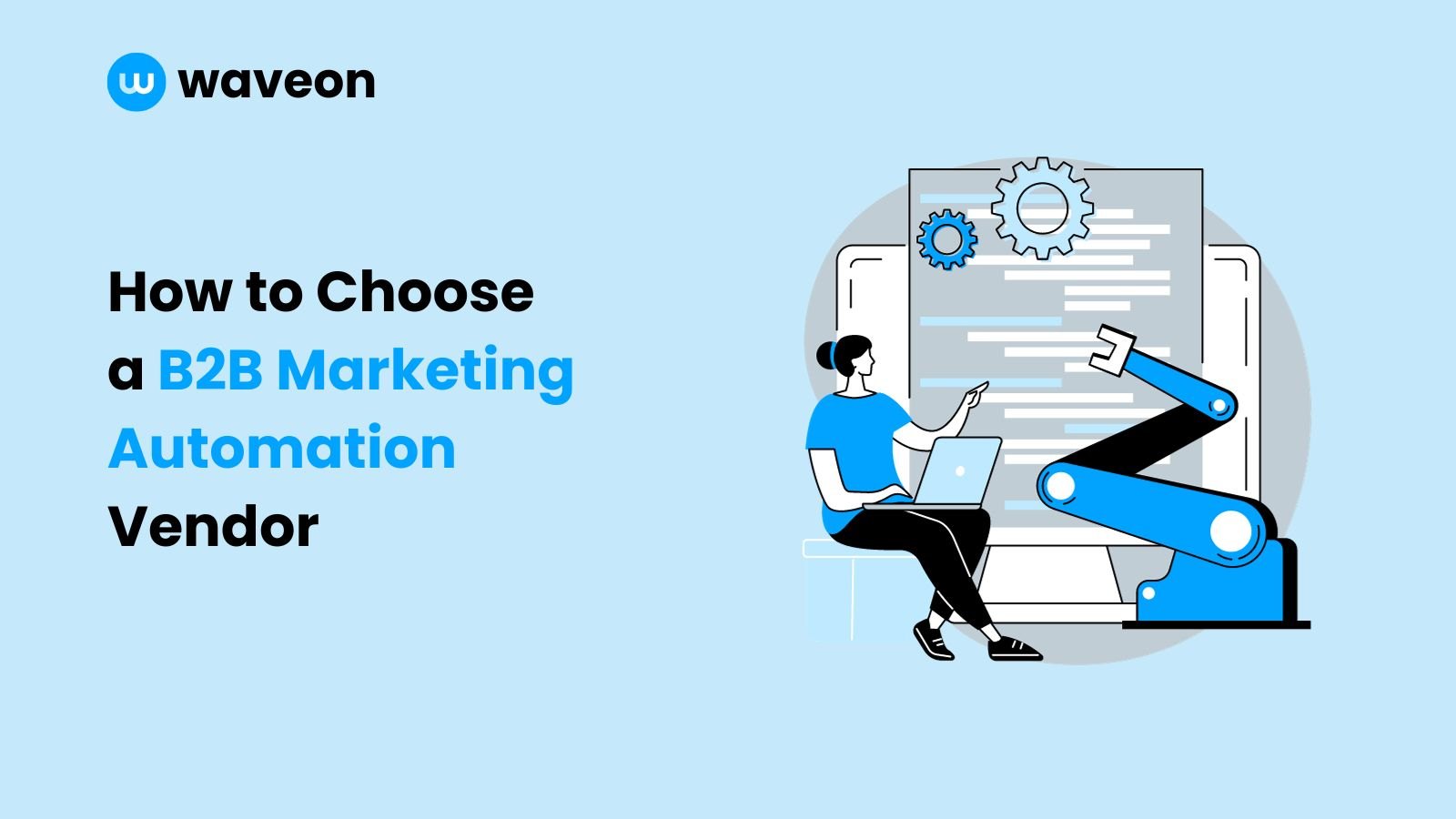
So, how do you shortlist B2B marketing automation vendors? What features should you look for? And how do you finalize the perfect tool for your business?
This post gives you a step-by-step process to select the right marketing automation software so you can immediately start automating your existing processes.
Before choosing marketing automation software…
Each company’s marketing strategy is different, and so are its needs. So, before choosing a marketing automation software, you should sit with your marketing team and:
Set clear goals
Before investing in any tool, you must know what you’re trying to achieve. What’s the ROI you’re expecting? And more importantly, what areas do you need help with automation?
Are you trying to improve email marketing? Or is building an active social media presence a challenge? Do you need to eliminate manual tasks and reduce the sales cycle?
Identify the key areas that need to be improved and set clear goals you’d like to achieve after integrating a marketing automation system into your strategy.
Classify your needs
Once you’ve identified requirements and classified goals, get more specific about the tasks the marketing automation software must perform to achieve them.
If you want to improve email marketing, what’s not working currently? How exactly an automation tool can help? Are you trying to add more MQLs? How many monthly MQLs are enough? How will you classify them? How many lead forms are needed? What’s the expected ROI for each MQL?
Create a list of must-have and nice-to-have features that will help you automate the tasks you identified. After this step, you’ll know exactly what to look for in marketing automation software.
Key features to look for in a B2B marketing automation vendor
Here are a few must-have features a B2B marketing automation software should provide. Pair these with your features list, and you’ll have an easier due diligence.
1. Easy integration with multiple tools
The platform you pick should provide easy integration with multiple tools. Why?
The reason why you’re looking for a B2B automation tool is to improve your existing strategy. So, after you’ve picked one, you’ll want to integrate it with your current systems and not recreate an entirely new approach.
A marketing automation tool with easy integration options will allow you to incorporate your favorite tools to streamline the workflow.
While researching, review each platform’s API documentation to determine how many other tools you can integrate and if the process is beginner-friendly. For example, DocuSign, an e-signature software, allows 400+ integrations with easy-to-implement APIs.
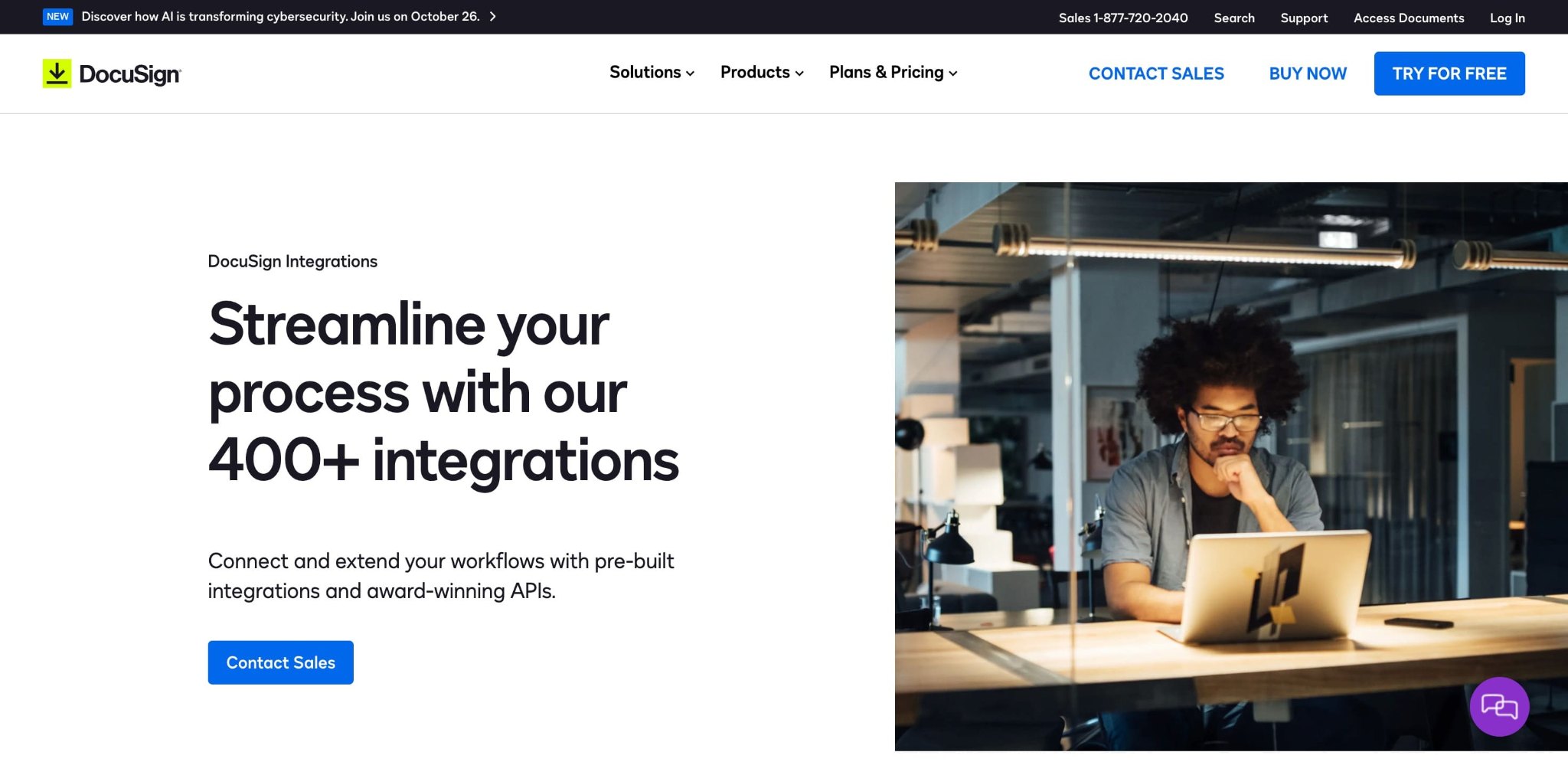
2. 24*7 customer support in different options
B2B automation tools are complicated, and chances are, you’ll need assistance with various features at multiple levels — so look for a platform with an active customer support system.
See how many support options are available: email, chat, call, or personalized priority support. Then, read third-party review sites like G2 to find out their response time.
Do they provide onboarding support services? Will a customer success manager be allotted to set up the systems for you? If not, then how will they guide you?
Many automation platforms provide support services to enable the seamless onboarding of new customers, such as Adobe Marketo, which offers services at multiple stages of a customer journey.
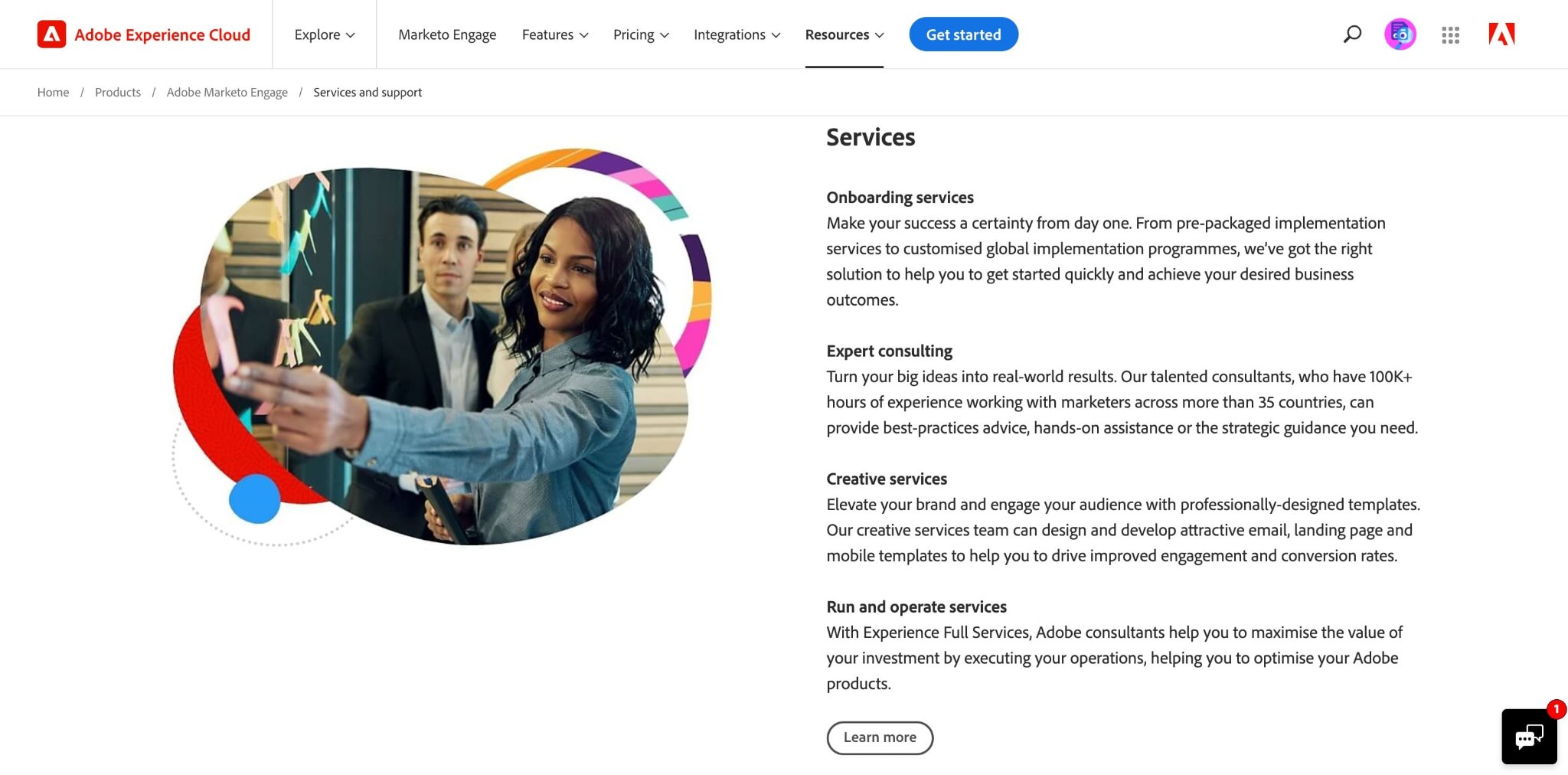
3. User interface and beginner friendliness
Automation itself is complex, so an ideal platform should offer a beginner-friendly user interface. But can you analyze the user interface without testing the product?
True, you can’t. However, you can still read third-party review sites to find out other customers' experiences.
Also, you can check out product tutorials on YouTube to understand how each function works — this will give you a good enough idea of the complexities.
Almost every B2B automation platform has a YouTube channel to share tutorial videos to educate their audience, such as WebEngage’s Fountainhead Learner Series. See if your automation tool has a channel on YouTube.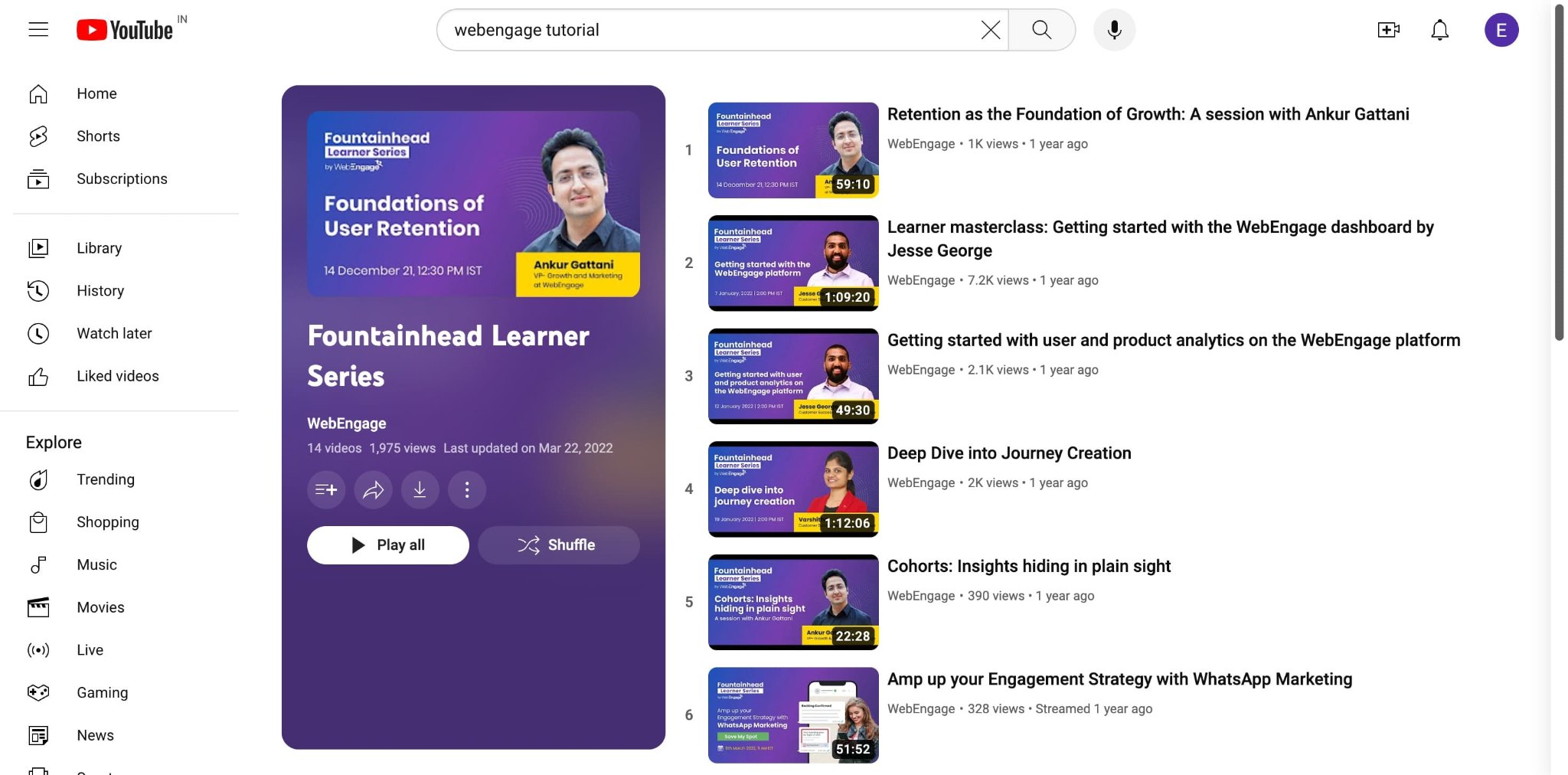
4. Analytics and reporting
The key to improving marketing is to extract insights from raw data quickly. Look for platforms that offer a detailed overview of analytics.
Ideally, the platform should display analytics for each specific feature but also check if you can easily import/export the reports. Can you share reports within the platform?
PaperFlite provides one of the most comprehensive analytics dashboards, detailing exactly who interacted with your content so you can plan follow-ups accordingly.
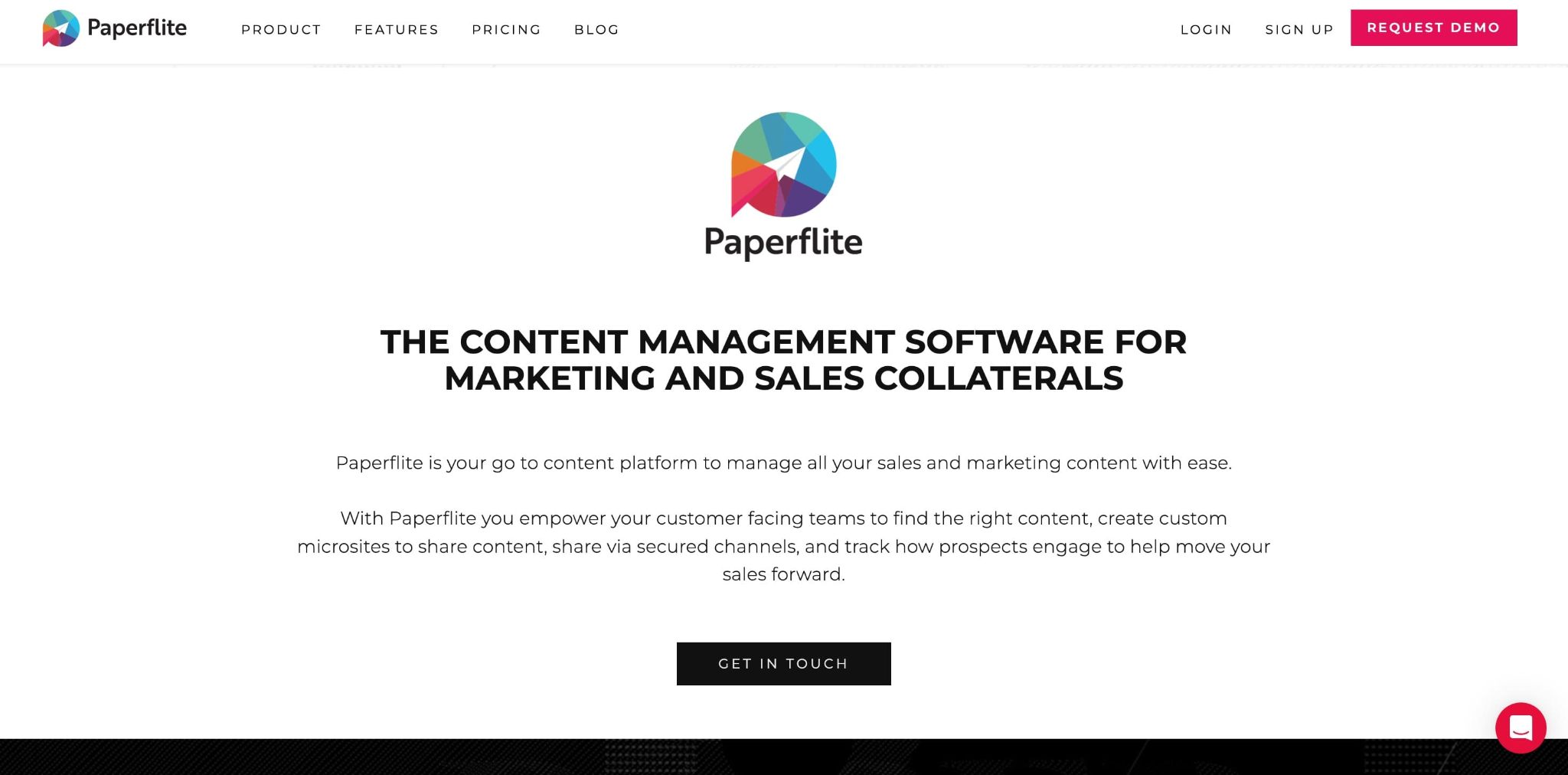
5. Lead management, segmentation, and personalization
For personalized targeting, you must look for an automation platform with many options to manage leads. See if the platform allows you to create lead profiles.
Can you segment leads?
Can you automate lead scoring?
Can you add extra tags and filters?
Can you personalize your message?
MailChimp offers one of the best segmentation features for personalized targeting. You can create conditional statements, add birthday dates, and mark VIPs as priority customers.

6. Content management
See if the platform allows you to store and organize your content. And can you connect multiple media channels if it’s a content management platform such as a social media automation tool?
Can you send customized content (while also satisfying algorithms) for each marketing channel? Can you batch-create and schedule content for consistent publishing? Can you review content performance?
Buffer allows you to integrate almost every social media platform and gives you options to customize your messages based on performance.
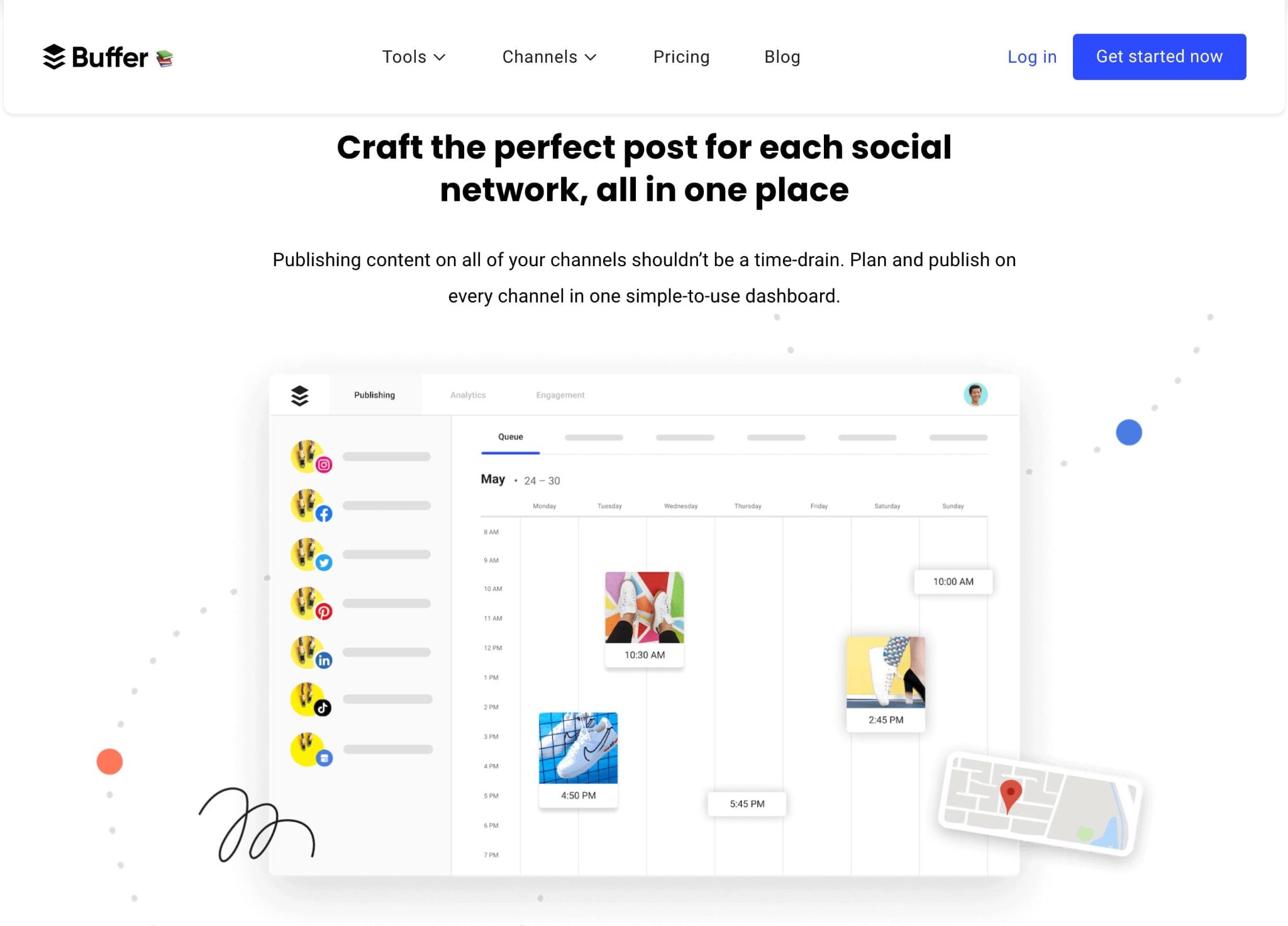
7. Learning and training materials
Many automation platforms keep improving and launching new features. So, what are they doing to keep customers updated? Does the automation vendor provide enough learning materials?
If so, how are they educating their customers?
Documentation?
Training videos?
Webinars?
Playbooks?
Community support?
Find out how your automation vendor educates its customers to correctly use all the platform's features. Ideally, the platform should provide many training methods about their new (or old) features. Such as DocuSign offers many educational materials to their customers.
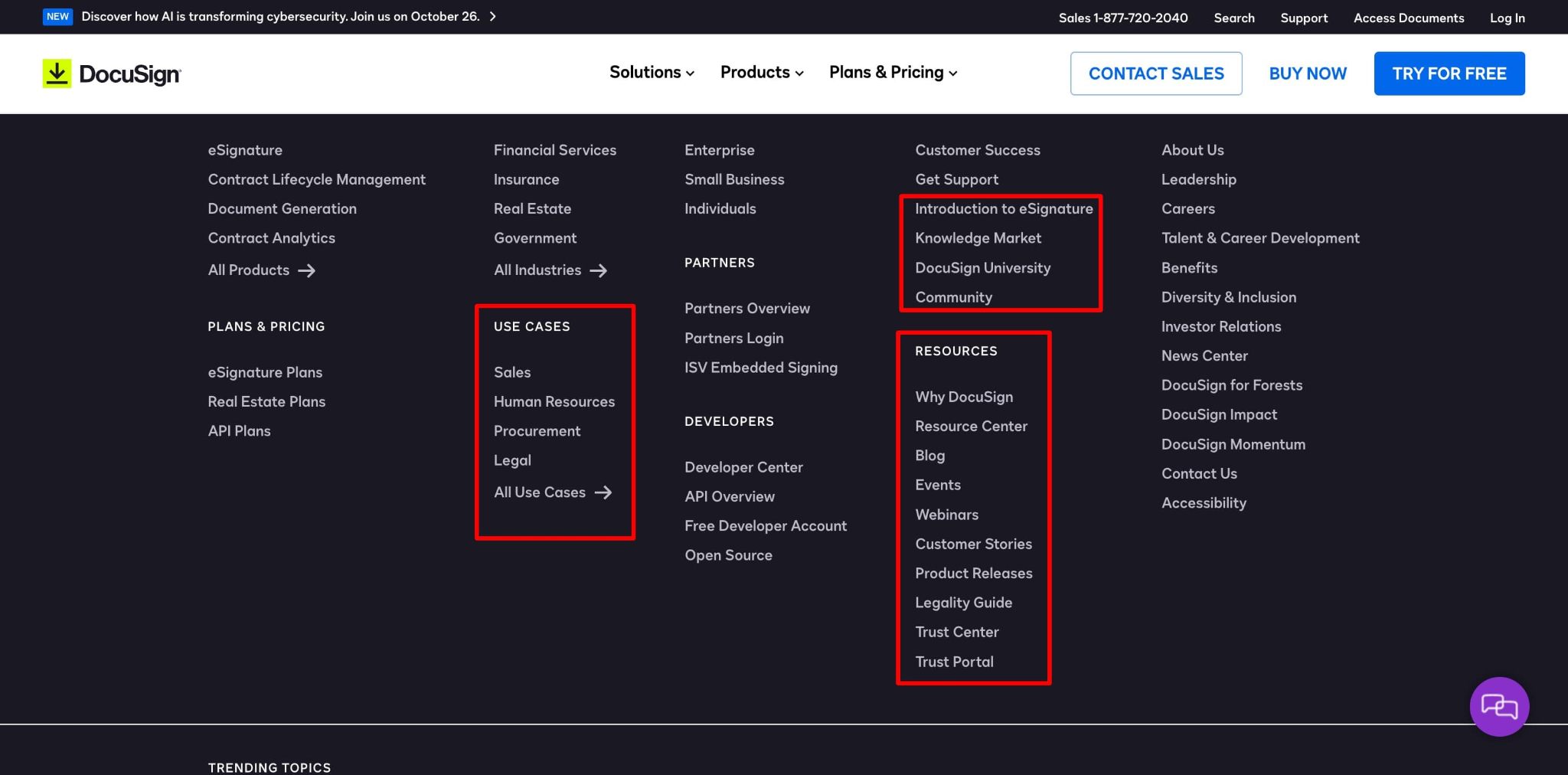
Plus, they send active email communications to their subscribers to keep them updated.
So, now that you know what to look for in a B2B marketing automation vendor, how will you analyze it? Follow the steps below.
How to analyze a B2B marketing automation vendor?
First, prepare a list of top B2B marketing automation tools from aggregation sites like G2 and TrustRadius that, on first look, fit your requirements.
1. Compare different options based on features
Compare platforms based on the features each provides. Remove those that don’t offer all the features you need. This will leave you with 3 to 4 best options.
2. Schedule demos with select platforms
Leverage product demos or free trials to use the tool yourself. Analyze each platform based on its performance, user-friendliness (Hint: use every vital feature to see how easy it is,) support options, and training materials.
Check if they provide in-app tutorials. If not, how easily can you find the correct documentation from the support center?
Also, get on a sales call with an agent, ask questions about any feature, and see how responsive they are. This would give you an idea of whether you enjoy using the platform.
3. Consider pricing and your budget
Finally, compare the pricing of each platform and see if the amount adds up. Do you feel the pricing is justified? Is it something your company’s marketing budget can squeeze in?
4. Make your final decision
Once you’ve made the final decision, get approval from other decision-makers and let end users use it for a while to see if they like it.
Pair your B2B marketing automation tool with an effective strategy
An automation platform may be an essential piece of the puzzle, but without an effective strategy, it’s useless. After finalizing a tool, it’s time to start integrating it into your systems.
Start with automating smaller tasks and optimizing the processes and see how it affects the overall performance. Once you’ve gotten used to it, you can plan more advanced strategies and keep improving for better results.












